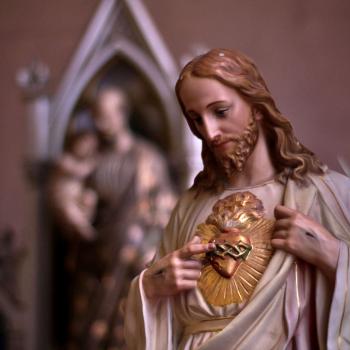
In the early 1810s, a newly retired Thomas Jefferson took on a project that no one had undertaken before him. After ordering two copies of the New Testament, he took out a razor and painstakingly cut out the portions of the text he preferred. He then rearranged these passages and glued them into the pages of a blank book. The result is what Jefferson called The Philosophy of Jesus of Nazareth, though today it is better known as The Jefferson Bible.
What was Jefferson’s motive for deconstructing the Bible? Jefferson wanted to differentiate between what he saw as the true and false teachings of Jesus. He discarded “things impossible, of superstitions, fanaticisms and fabrications.” He instead looked for passages that “place the character of Jesus in its true and high light.” In short, Jefferson removed the miracles.
There are over 50 miracles mentioned in the New Testament.
Jefferson was deeply skeptical of the supernatural acts of Jesus that were mentioned in the Bible. By one count, there are over 50 of them. Consider that by the time Jefferson created his Bible, scientific knowledge was beginning to expand. Anything that could not be proven through experimentation, could be called into doubt. And while Jefferson fully believed in the moral principles of Jesus, he found the more unexplainable events in the Bible to be hogwash.
In the book The Miracles of Jesus, H. Van der Loos breaks down the miracles of Jesus found in the New Testament into 2 distinct groups:
- Miracles that affect people. Jesus healing the blind or exorcising evil spirits, and raising people from “the dead” including Lazarus and later himself.
- Miracles that control nature: Jesus walking on water, turning water into wine, or feeding thousands of people with only five loaves of bread and two fish.
Did these miracles really happen?
Most Christians, as well as Muslims (who view Jesus as a prophet of God), will tell you the miracles did happen. In fact, many believe these miracles began happening when Jesus was a youth. In both the Gnostic Infancy Gospel of Thomas and in stories passed along in the Muslim Sufi faith, there are tales of a precocious young Jesus pulling off incredible feats.
Sufi authors make frequent reference to Jesus as “a Master of the Way” with abilities that transcended those of normal human beings. In the tale that follows, which appears in slightly different forms in several Sufi texts, a young Jesus shows off his ability to do the unexplainable:
One day Jesus, the son of Mary, was fashioning small birds out of clay. Some other youngsters, who could not do so, ran to the elders and told them, “This work cannot be allowed on the Sabbath,” for it was a Saturday. The elders went to the pool where Jesus was sitting and asked him where his birds were. He pointed to the birds he had made and they flew away. “Making birds which fly is impossible, therefore it cannot be a breaking of the Sabbath,” said one elder. So, the Sabbath was not broken.
Was Jesus a magician? Or working in ways we do not understand?
Writing in Jesus, A New Vision, Whitley Strieber points out that the original gospel writers were “at pains to identify the miracles as originating from Jesus’s divinity and not from magical practice.” The reason? During the time Jesus lived, the practice of magic was looked down upon—and could result in imprisonment. In fact, an ancient Roman text on the life of Nero reveals that “penalties were imposed on Christians, a sort of men who practice a new superstition involving magic.” Another ancient text identifies Jesus as “a Galilean magician.”
Strieber questions whether “the miracles were not supernatural but caused by natural forces that remain to this day little understood.” He speculates that Jesus was able to “bend the rules” of nature and work with them in ways we cannot understand today—and perhaps in ways even Jesus did not totally understand.
One such example would be in Mark 8:22-26 where Jesus heals a blind man by spitting in his eyes—twice. Strieber calls out the fact that in ancient medical texts, including the Egyptian Book of the Dead, “there are many examples of medical spitting, and one way it was used was to cure weak vision.” So, was the man that Jesus healed actually blind?
There are Christians today who believe the various miracles of Jesus were meant to be taken figuratively, not literally. For instance, when Jesus helps the blind to see, they believe this is not meant to be taken at face value—the person had actual sight, but Jesus helped him see the light of God within. (As in the lyric from Amazing Grace, “I once was blind, but now I see.”)
The connection between magic and Jesus exists today.
Attend services in a Roman Catholic church and at a certain point, during the sacrament of communion, a process called transubstantiation happens. Through a ritual that dates to the time of the Apostle Paul, a priest turns bread and wine into “the body and blood of Christ.” It is akin to enacting a magical spell, similar to something you might see in a Harry Potter movie.
But perhaps the biggest miracle of all is the fact that Christianity, from its humble beginnings, is still around today. To paraphrase words of Whitley Stieber:
Around 40 years after the death of Jesus, a truly striking phenomenon took place. People decided to commit the stories that were circulating about him to the written word. They were then amplified into a religion that has changed human life and human history. That may be the greatest miracle of all.
It’s a sentiment that even a non-believer in miracles, like Thomas Jefferson, might agree with.













